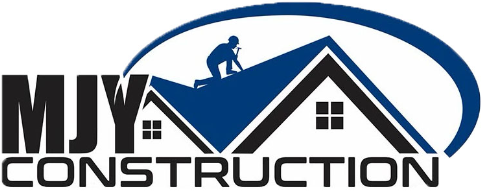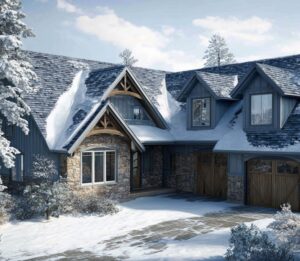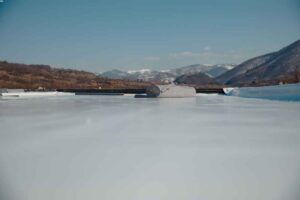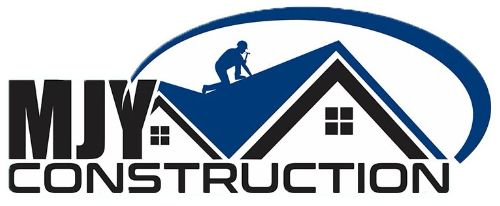Massachusetts summers may bring sunshine and beach days, but they also deliver unpredictable weather. From sudden downpours and high winds to hail and lightning, summer storms can take a toll on your roof. Knowing how to recognize roof damage signs early is crucial to preventing leaks, mold growth, and costly structural repairs.
This guide by MJY Construction covers how to perform a safe and effective post-storm roof inspection, what warning signs to look for, and why timely action can save your roof—and your budget. After years of working with Massachusetts summer storm roofing issues, we know what to watch out for and how to help you act quickly.
Why Summer Storms Are Tough on Massachusetts Roofs
Though winter gets a lot of attention, summer storms often bring damaging conditions that sneak up on homeowners. These can include:
- Torrential rain that overwhelms gutters and finds weak spots in flashing
- Wind gusts over 60–70 mph that lift or loosen shingles
- Falling branches that puncture roofing materials
- Hail impacts that bruise asphalt shingles and dent metal roofs
- Sudden temperature shifts that cause expansion and contraction
Each of these weather elements can weaken your roof’s protective barrier, even if you don’t see immediate leaks or interior damage. That’s why knowing how to identify early roof damage signs is so important.
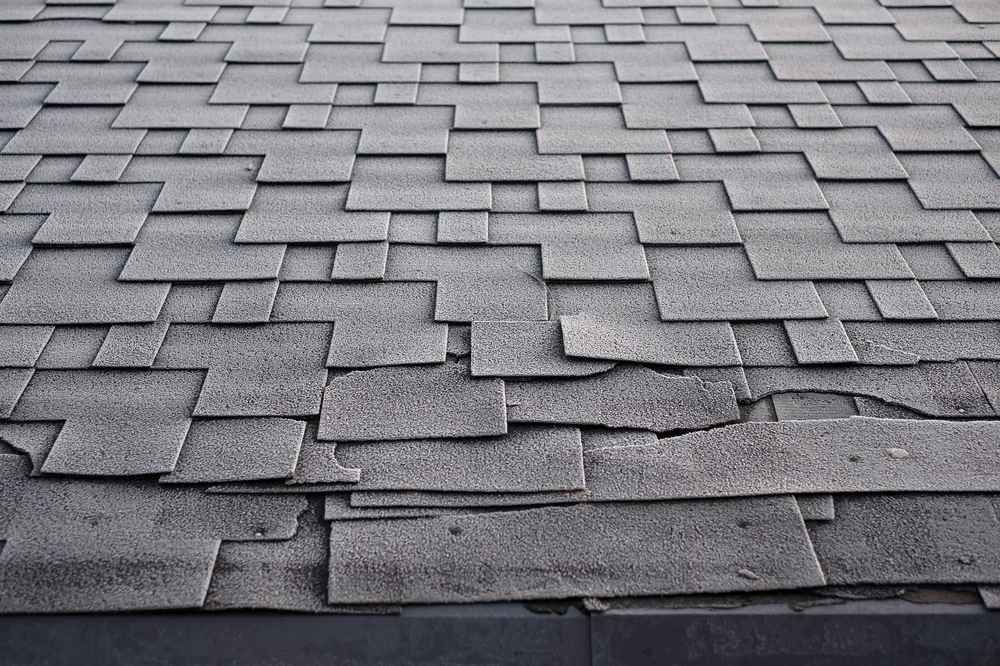
Start with a Ground-Level Inspection
Before climbing a ladder—or better yet, calling a professional—begin with a basic visual check from the ground. After a storm, walk around your property and look for:
- Shingle debris in the yard or near downspouts
- Bent or dented gutters
- Branches or leaves on the roof
- Obvious holes or displaced flashing near chimneys or vents
- Water stains on exterior walls or eaves
If you see any of these, it’s time to take a closer look or schedule a post-storm roof inspection with a licensed roofer.
Common Roof Damage Signs to Watch For
1. Missing or Lifted Shingles
High winds can peel shingles back or remove them completely. Even if they don’t fully detach, lifted shingles allow water to penetrate beneath the surface, which can lead to rot or mold.
Look for uneven lines, curling edges, or loose tabs—especially around the roof’s perimeter.
2. Granule Loss
Asphalt shingles are coated in protective granules that reflect UV rays and provide water resistance. After a summer storm, check your gutters or downspouts for a buildup of black or gray granules. This is a common roof damage sign that the shingles are deteriorating faster than they should.
3. Flashing and Seal Damage
Flashing is the thin metal or waterproof material that seals areas like chimneys, skylights, and vent pipes. Wind-driven rain or flying debris can dent, bend, or dislodge it, leading to water intrusion.
Inspect flashing for:
- Gaps or separation
- Rust or corrosion
- Cracks in sealant
4. Interior Signs of Water Damage
A post-storm roof inspection isn’t complete without checking the inside of your home. Look in the attic or upper floors for:
- Water stains on ceilings or walls
- Musty odors
- Sagging drywall
- Mold growth in corners or near vents
These are urgent signs that moisture is entering your home from the roof.
5. Damaged Soffits and Fascia
Your roof’s soffit and fascia protect against animal intrusion and water entry. Storm damage to these components can lead to hidden leaks and pest problems. Watch for:
- Cracked or warped panels
- Mold or peeling paint
- Soft wood that indicates rot
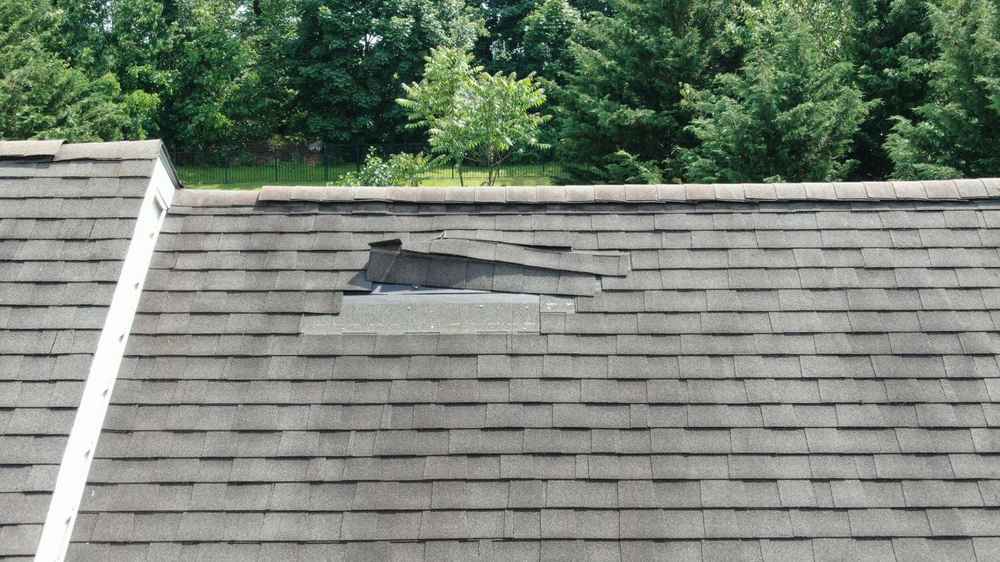
Special Concerns for Massachusetts Summer Storm Roofing
Coastal Storms
Homes near the South Shore, Cape Cod, and other coastal areas face added pressure from salt spray and hurricane-force winds. Metal fasteners and flashing may corrode more quickly, and shingle adhesives can wear down faster.
Tree-Covered Properties
Inland towns with dense tree cover like Sharon, Canton, and Bridgewater should always inspect for fallen branches, cracked shingles, or blocked gutters after storms.
Older Roofs (15+ Years)
Even high-quality shingles degrade over time. If your roof is older than 15 years, post-storm roof inspections become even more critical after severe weather. We recommend checking your attic after every major storm, even if no exterior damage is visible.
How to Safely Inspect Your Roof (And When to Call the Pros)
Do-It-Yourself (With Caution)
If you’re comfortable using a ladder and the roof has a low pitch, you may be able to inspect parts of the surface yourself. Always follow these safety tips:
- Wear non-slip shoes
- Never go on a wet or steep roof
- Use a sturdy ladder and have someone spot you
- Avoid walking on damaged shingles—they can crumble or slip
Take photos of any roof damage signs to document the condition, especially if you need to file an insurance claim.
Call a Professional Roofer
Many issues aren’t obvious from the surface. MJY Construction uses drone inspections, moisture meters, and trained eyes to assess damage safely and accurately. We know what Massachusetts summer storm roofing looks like—whether it’s new damage or an ongoing issue.
Will Insurance Cover Storm Roof Damage?
In most cases, yes. Homeowners insurance typically covers damage from wind, hail, and falling objects—as long as the damage wasn’t caused by negligence or pre-existing roof failure.
We recommend:
- Taking photos of your roof before and after major storms
- Keeping all inspection and repair records
- Acting quickly—delays can complicate claims
You can learn more about disaster-related homeowner insurance coverage from FEMA’s National Flood Insurance Program.
Why Early Action Makes a Difference
Ignoring small signs of damage now often leads to bigger, more expensive repairs later. What starts as a lifted shingle could lead to:
- Insulation damage
- Ceiling collapse
- Electrical hazards from water intrusion
- Mold remediation costs
By conducting a thorough post-storm roof inspection and responding to roof damage signs early, you avoid these risks—and protect your investment.
How MJY Construction Helps Homeowners After Summer Storms
As a local, experienced roofing contractor, MJY Construction provides:
- Free storm damage inspections
- Honest, no-pressure repair and replacement quotes
- Emergency roof tarping and leak control
- Help with insurance claim documentation
- Certified roofing installation using materials built for New England weather
We work in your neighborhood and understand the weather patterns, local codes, and common problems in Massachusetts homes.
Don’t Wait for Leaks—Get Ahead of Roof Damage
Your roof won’t always show visible damage after a storm, but that doesn’t mean it escaped harm. A quick inspection can make the difference between a simple repair and an expensive replacement months down the road.
If your area was recently hit by a storm—or if you just want peace of mind—MJY Construction is ready to help.
Get a free inspection now and let our experts assess your roof’s condition before small issues become big problems.
